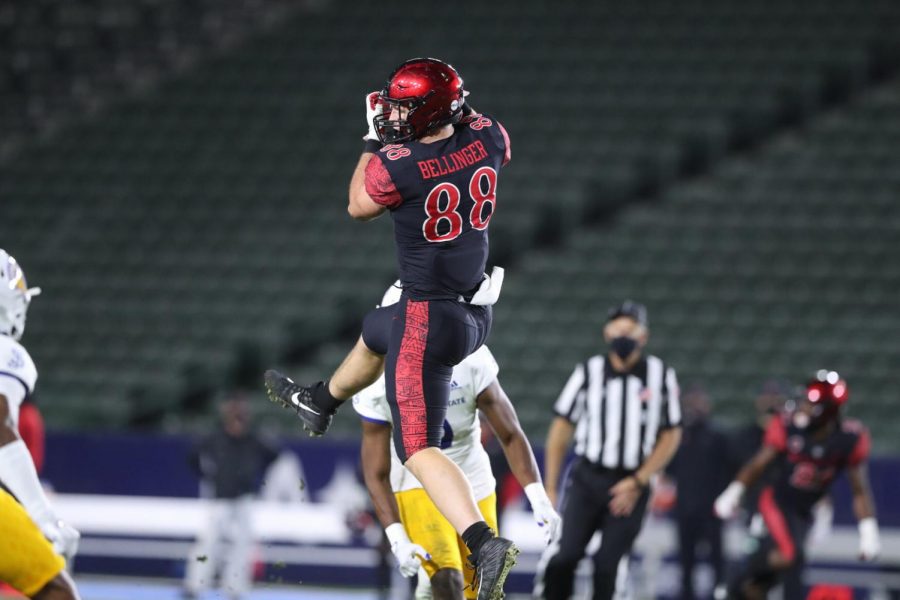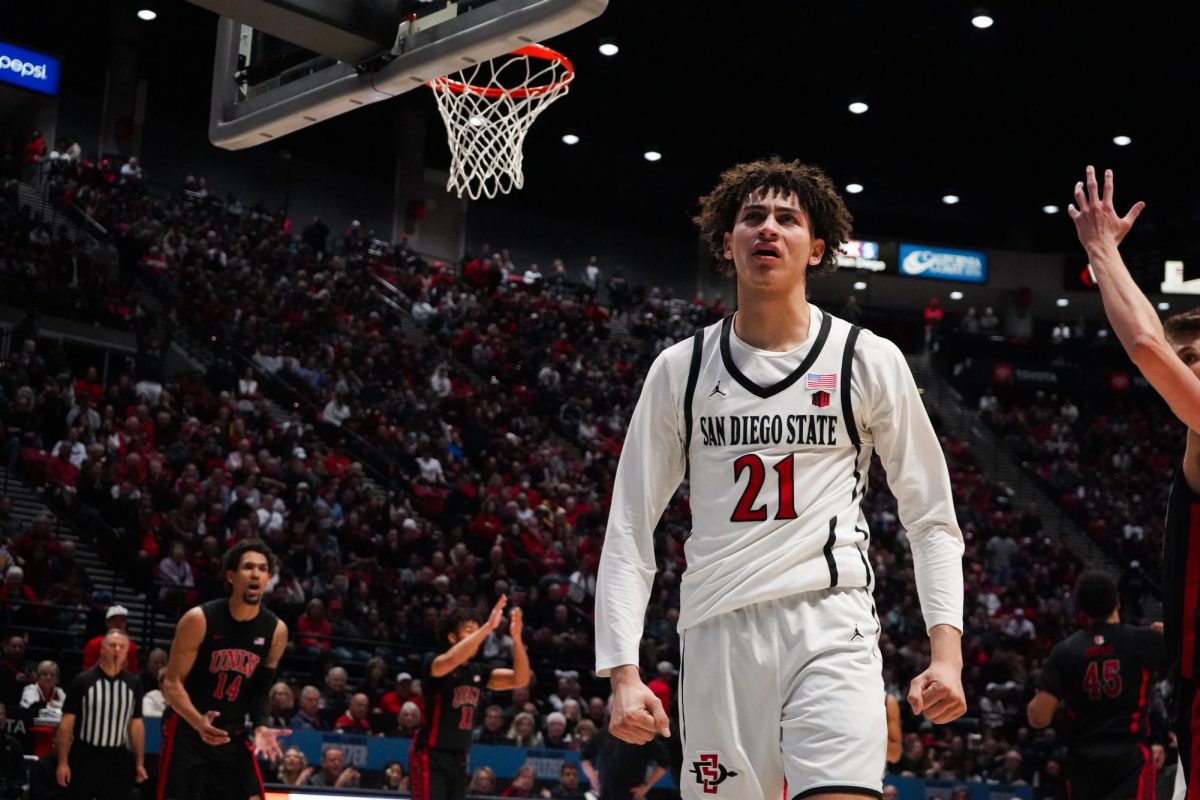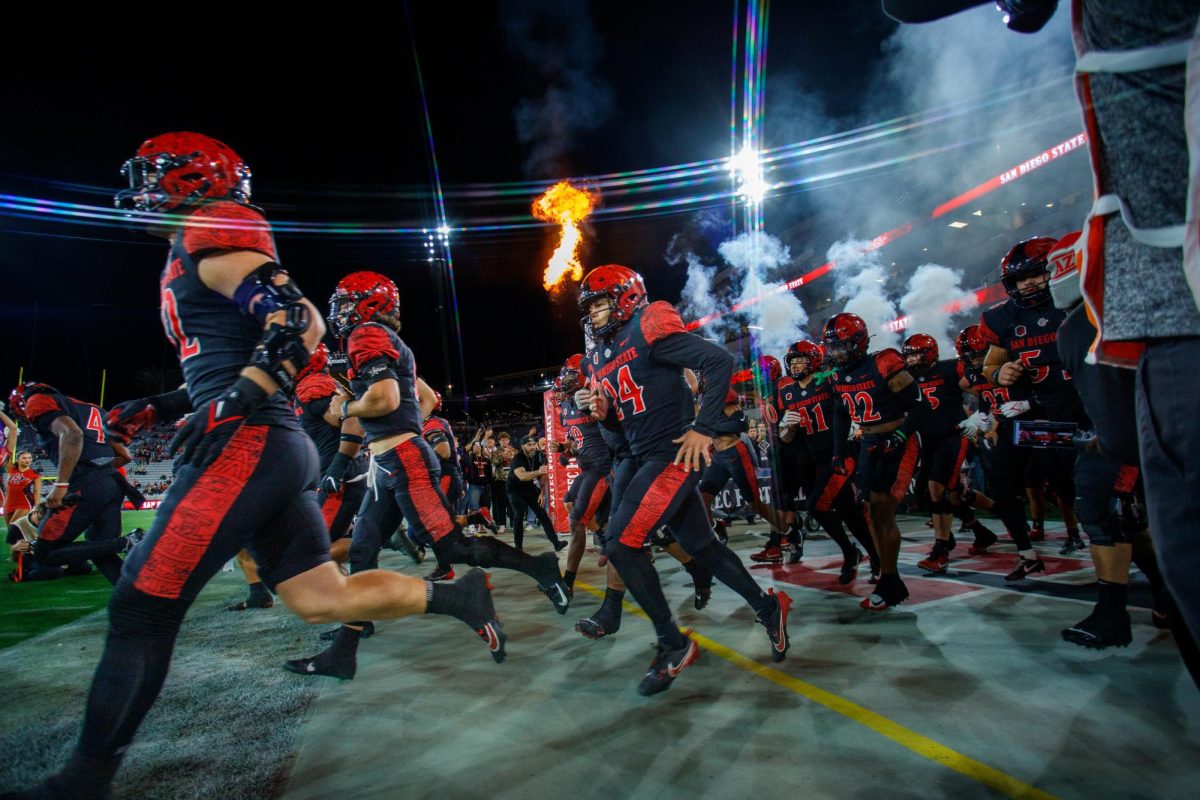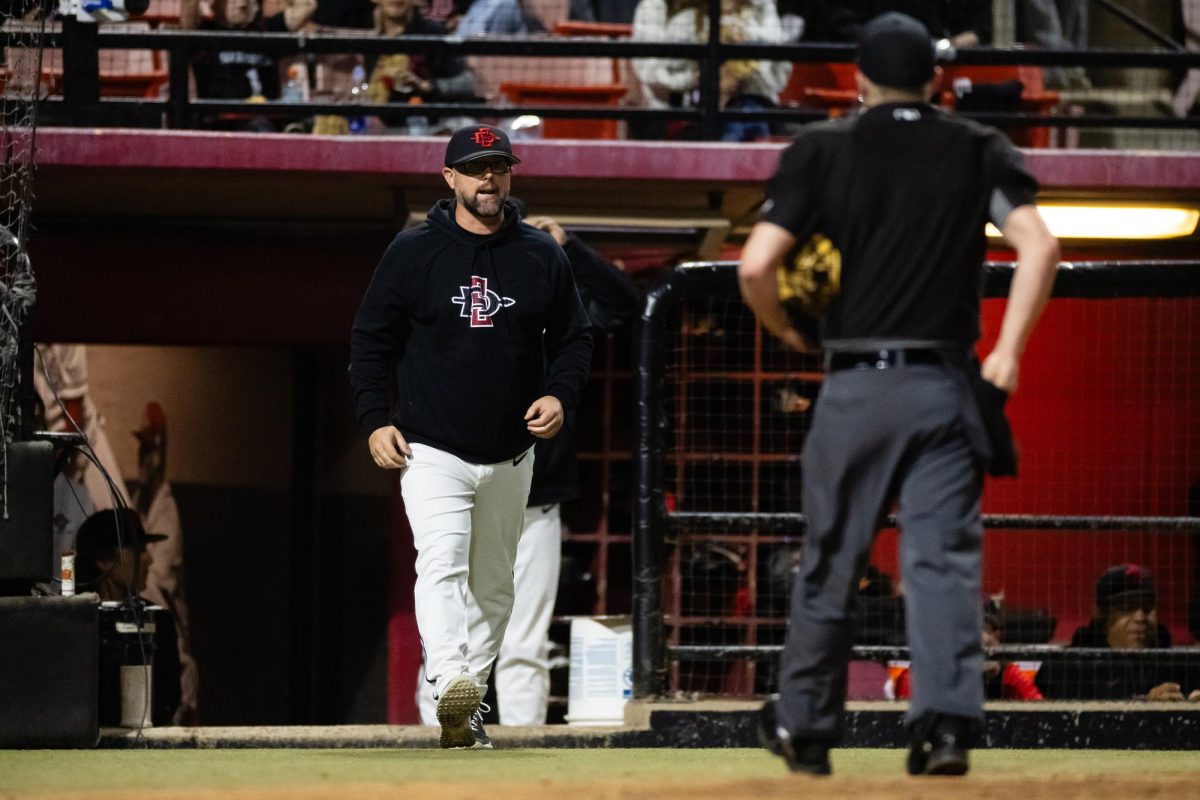Almost a year after stealing a trip to the Mountain West Conference championship from San Diego State football, the University of Hawaii Rainbow Warriors take a trip to Dignity Health Park in Carson, Calif. to take on the Aztecs this Saturday, Nov. 14.
Not only are the Aztecs looking for redemption for last season’s defeat against Hawaii, but they’re also looking to get back to their winning ways after last week’s 28-17 loss to San José State. SDSU players like senior safety Tayler Hawkins are eager to get back onto the field to avenge the loss.
“I’m very excited,” Hawkins said. “We don’t want to feel that (losing) feeling anymore. Definitely excited to get out there and get another opportunity with this team.”
The Rainbow Warriors (2-1) are coming off a 38-33 come-from-behind victory over New Mexico.
It has been an up-and-down season for Hawaii despite their winning record. After a 34-19 victory at Fresno State, the Rainbow Warriors went to Wyoming and lost 31-7 before flying back to Hawaii to beat New Mexico.
Hawaii’s offense
The Rainbow Warriors have a balanced offense with a 53 to 47% split of run to pass plays. Their offensive scheme involves run-pass-options (RPOs) out of a pistol formation the team will run anywhere regardless of field position. Hawaii’s main passing attack comes from four-wide sets with receivers in a doubles or trips formation. Hawaii is averaging 250 passing yards and 180 rushing yards per game this season.
SDSU head coach Brady Hoke said after reviewing this week’s film, he feels Hawaii are a strong side.
“I think they’re a pretty complete team when you watch them.” Hoke said.
Sophomore quarterback Chevan Cordeiro leads the team with 749 passing yards, four touchdowns and three interceptions. Last week’s game against New Mexico was Cordeiro’s most productive game of the season. He completed 77% of his throws for 410 yards and all four of his passing touchdowns on the year.
Hawaii’s run game
Hawaii has four players with 15 or more carries this season and have averaged 4.8 yards per carry after three games.
Similar to SDSU’s running back room, Hoke said Hawaii’s running backs each have different attributes that make them stand out.
“Each back has a certain degree of specialness to them where they can do some different things.” Hoke said.
The current rushing leader for Hawaii is junior running back Miles Reed with 33 carries for 190 yards — that’s 5.8 yards per carry. Cordeiro is second on the team in rushing yards with 156 yards and three touchdowns. Most of his rushes have come from quarterback keepers that derived from the RPO offense. Rounding off the ground game for Hawaii is senior running back Calvin Turner with 16 carries for 99 yards and two touchdowns (6.6 yards per carry) and freshman running back Dae Dae Hunter, who has 24 rushes for 94 yards and one touchdown.
Hawaii’s wide recievers
Hawaii’s skill-position corps is deep with playmakers, as five of its receivers have over 100 receiving yards.
“They’ve got guys who can get down field and catch the football,” Hoke said
Senior wide-outs Jared Smart and Rico Bussey have been Cordeiro’s favorite targets so far this season, combining for 30 catches for 276 yards. The pair typically gets the majority of the targets but the underclassmen have made the most of their opportunities thus far. Sophomore wide receiver Nick Mardner averages over 21 yards per catch with eight catches for 173 yards and a touchdown. Junior Zion Bowens has three catches — two for touchdowns — for 129 yards, averaging 43 yards per catch. Due to the RPO offense, Turner has also been involved in the pass game out of the backfield. He has six catches for 111 yards and a touchdown.
Hawaii’s defense
Hawaii’s defense is the weak link of the team. The unit has conceded an average of 207 passing yards and 227 rushing yards per game for a total of 434 offensive yards per game. Opposing offenses have scored an average of 27.7 points per game against the Rainbow Warriors so far this season.
Despite being poor statistically, Hoke said he still sees Hawaii’s defense as a challenge.
“They’re aggressive,” Hoke said. “I think they’re physical. I know (Hawaii head coach) Todd (Graham) is in that vein as a defensive-minded guy.”
The Rainbow Warriors run a few different defensive sets, switching between a 3-4-4 and a 4-3-4. Hawaii often tends to load the box with four to five players and will usually have at least one corner in press. Sometimes against passing offensive sets, the Rainbow Warriors will run a man-to-man defense with a five or six-man blitz up the middle.
A notable player to watch is sophomore linebacker Darius Muasau, who leads Hawaii with 35 tackles and 1.5 sacks. Senior defensive backs Eugene Ford and Cortez Davis lead the team with two interceptions and two forced fumbles, respectively.As a unit, Hawaii has forced six turnovers with four interceptions and two fumble recoveries. Their turnover differential is even.
What to watch for
Despite having a positive record, Hawaii’s offensive strength has looked different in each game this season and seems almost dependent on quarterback Cordeiro to have a good game in order to win.
In week one against Fresno State, all of Hawaii’s touchdowns came on the ground with Cordeiro leading in passing yards and rushing yards (including two rushing touchdowns). In week three versus New Mexico, Cordeiro scored all of the Rainbow Warriors’ five touchdowns. The team’s only loss of the season to Wyoming was unproductive offensively, as Cordeiro failed to get any momentum and the offense scored just seven points.
Offensively, Hawaii has committed six turnovers and allowed 10 sacks this season. If the Aztecs can maintain pressure at the line of scrimmage, pursue the ball and keep Cordeiro in check, SDSU has the potential to put together another strong defensive performance.
Hoke said one of the keys to a strong showing on defense is pass-rushing the quarterback.
“We have to be fundamentally sound.” Hoke said, “You got to try to get some pressure on the quarterback.”
Defensively, Hawaii has given up over 275 yards in two of three games this season. Six of the nine touchdowns given up by the Rainbow Warriors have been on the ground. If the Aztecs’ running back corps can find gaps and excel in open space, they have the potential to experience the success they had the first two weeks of the season.
Whoever wins the battle at the line of scrimmage has the best chance of winning the game. If the Aztecs can protect the quarterback and the football, they could enter the second half of the season with a 3-1 record.









